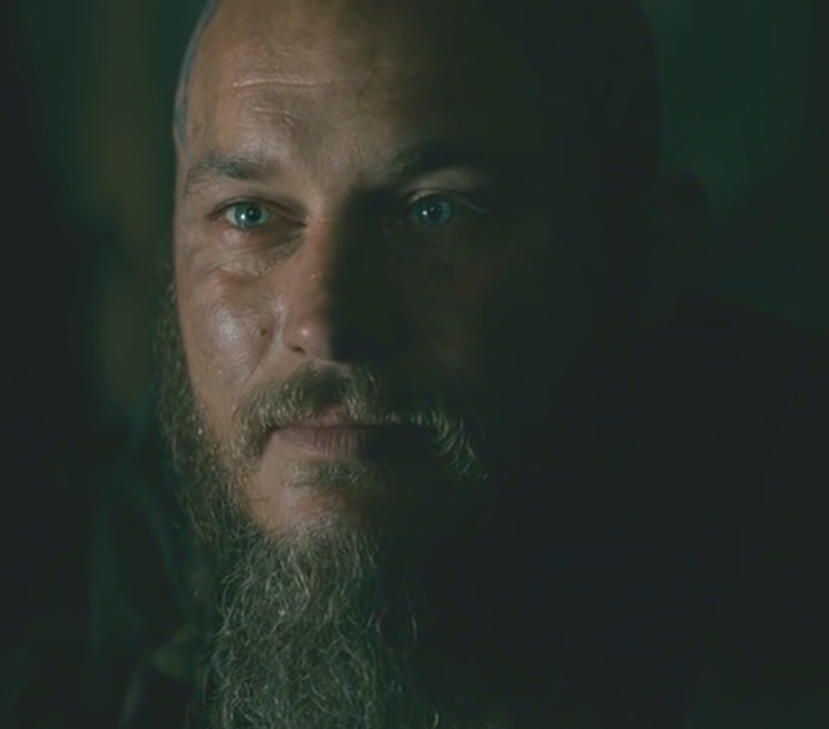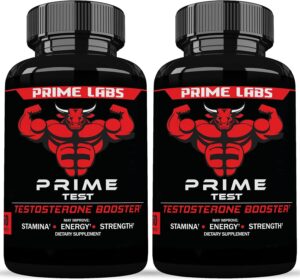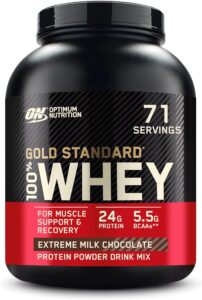
Travis Fimmel’s Transformation: The Workout Routine Behind Ragnar Lothbrok’s Legendary Physique for the Vikings TV Role
Travis Fimmel’s portrayal of Ragnar Lothbrok in the TV series Vikings captivated audiences not just with his compelling acting but also with his impressive physical transformation. To embody the fierce and resilient Viking warrior, Fimmel had to undergo intense physical training, building a physique that was both powerful and agile. This article delves into the rigorous workout routine Fimmel followed to transform into Ragnar Lothbrok, offering insights into how he achieved the warrior-like body that became synonymous with the character.
Building a Viking Physique
The transformation into Ragnar Lothbrok required more than just hitting the gym. It was about developing a body that looked as if it had been honed through a lifetime of battles, long sea voyages, and harsh living conditions. This meant focusing on functional strength, endurance, and a lean, muscular build.
1. Strength Training: The Core of the Routine
Strength training was at the heart of Fimmel’s workout regimen, designed to build the dense muscle mass needed to portray a Viking warrior. His routine likely centred around compound movements, which are exercises that work multiple muscle groups simultaneously, helping to build overall strength and muscle mass.
Key Exercises:
- Squats: Essential for building lower body strength and mass, squats also improve core stability, which is crucial for a warrior-like physique.
- Deadlifts: A compound movement that targets the entire posterior chain (back, glutes, hamstrings), deadlifts are vital for building functional strength and power.
- Bench Press: This classic upper body exercise was key for developing chest, shoulders, and triceps, contributing to a broad, powerful upper body.
- Pull-Ups: Pull-ups target the back, shoulders, and arms, helping to create the V-shaped torso that is both aesthetically pleasing and functionally strong.
- Overhead Press: Strengthening the shoulders and upper chest, the overhead press helped Fimmel achieve a robust upper body, crucial for the Viking warrior look.
Training Split:
Fimmel’s strength training routine likely followed a traditional split, focusing on different muscle groups each day:
- Day 1: Chest and Triceps (Bench Press, Dips, Push-Ups)
- Day 2: Back and Biceps (Deadlifts, Pull-Ups, Rows)
- Day 3: Legs (Squats, Lunges, Leg Press)
- Day 4: Shoulders and Core (Overhead Press, Planks, Russian Twists)
- Day 5: Full Body/Functional Movements (Kettlebell Swings, Battle Ropes, Tire Flips)
2. Functional Training: Emulating the Viking Lifestyle
In addition to traditional strength training, Fimmel’s routine incorporated functional training to simulate the physical demands of a Viking’s daily life. This included movements that required coordination, balance, and stamina—traits essential for combat and survival.
Functional Exercises:
- Kettlebell Swings: This full-body exercise improves strength, endurance, and explosiveness—perfect for mimicking the movements of wielding heavy weapons.
- Sledgehammer Workouts: Repeatedly striking a tire with a sledgehammer not only builds upper body strength but also enhances coordination and stamina, reflecting the grueling labor of a Viking warrior.
- Battle Ropes: Battle ropes are excellent for building upper body endurance and cardiovascular fitness, both of which are crucial for the physically demanding life of a Viking.
- Tire Flips: This exercise mimics the kind of heavy lifting that would be commonplace in a Viking’s life, building raw strength and power.
Integration of Functional Training:
- Fimmel likely performed functional training sessions twice a week, integrating them with his strength training routine. This ensured that while he was building muscle, he was also enhancing his agility, coordination, and endurance.
3. High-Intensity Interval Training (HIIT): Shredding Fat and Building Endurance
To achieve the lean, defined muscles characteristic of a Viking warrior, Fimmel incorporated High-Intensity Interval Training (HIIT) into his regimen. HIIT is known for its effectiveness in burning fat while preserving muscle mass, making it ideal for actors needing to look both muscular and lean on screen.
HIIT Workouts:
- Sprint Intervals: Fimmel would sprint at maximum effort for 30 seconds, followed by 90 seconds of rest or light jogging. Repeating this cycle for 20-30 minutes enhances cardiovascular fitness and accelerates fat loss.
- Circuit Training: Combining different exercises (e.g., burpees, mountain climbers, kettlebell swings) into a circuit and performing them with minimal rest between sets keeps the heart rate elevated, torching calories and improving endurance.
HIIT Schedule:
HIIT sessions were likely included 2-3 times per week, either as separate workouts or integrated into the end of strength training sessions. These sessions ensured that Fimmel maintained low body fat while keeping his muscles defined and his stamina high.
4. Conditioning and Core Work: The Final Touch
Conditioning exercises were crucial for building the stamina and resilience that Fimmel needed to convincingly portray a Viking warrior. One of the key conditioning workouts in his routine was the Weighted Burpee, a full-body exercise that combines strength and cardio. Fimmel likely performed 4 sets of 15 reps, which helped enhance his explosive power and cardiovascular endurance.
To complement his conditioning, core training was essential for developing the strong midsection necessary for both functional movement and the aesthetic appearance of a warrior. Fimmel’s core routine included a series of targeted exercises often referred to as the 8-Minute Abs workout. This sequence involved various crunches, twists, and leg raises, each performed for 45 seconds to thoroughly engage the core muscles:
- Crunches: Standard crunches to target the upper abs.
- Oblique Crunches: Focus on the side abs with 45 seconds per side.
- Toe Touches: Also known as Tortoise Shell, these engage both the upper and lower abs.
- Reverse Crunches: The Yoga Crane exercise focuses on the lower abs.
- Side Crunches: Performed in the Crouching Baby Pose for oblique strength.
- Push Through: Push the Baby exercises emphasize lower ab endurance.
- Leg Pushes: Targets the lower abs and helps in defining the V-cut.
- Modified Bicycle Crunch: Works the entire abdominal region.
- Curl Up: This final exercise focuses on overall core strength and endurance.
Cardio Routine:
Fimmel likely engaged in steady-state cardio 2-3 times per week, often on the same days as his functional training. This balanced approach ensured that he developed the endurance necessary to sustain long filming days while maintaining his physique.
Synchronizing Diet with the Workout Routine
Fimmel’s workout routine was complemented by a diet meticulously designed to fuel his training and support his physical transformation. His diet focused on high protein intake to aid muscle growth, complex carbohydrates for sustained energy, and healthy fats for hormonal balance and satiety. Proper nutrition was essential to recover from intense workouts and to ensure that Fimmel’s body was in peak condition to perform.
Pre-Workout Nutrition:
- Complex Carbohydrates: Foods like oats or whole-grain bread provided slow-releasing energy, essential for powering through demanding workouts.
- Protein: Lean protein sources such as eggs or a protein shake helped to prepare muscles for the stress of exercise.
Post-Workout Recovery:
- Protein-Rich Meals: To maximize muscle repair and growth, Fimmel likely consumed meals high in protein post-workout, including options like grilled chicken or a protein shake.
- Carbohydrates: Fast-digesting carbs, such as sweet potatoes or fruits, helped replenish glycogen stores and promote recovery.
Hydration:
Staying hydrated was also critical. Fimmel likely drank plenty of water throughout the day, especially during and after workouts, to maintain optimal performance and recovery.
Travis Fimmel’s transformation into Ragnar Lothbrok was not just about looking the part but embodying the essence of a Viking warrior. His rigorous workout routine, focused on strength, functionality, and endurance, was central to this transformation. By combining traditional strength training with functional exercises, HIIT, and cardio, Fimmel developed a physique that was both powerful and agile—qualities essential for portraying a legendary Norse hero.
This holistic approach to fitness, supported by a carefully planned diet, allowed Fimmel to bring Ragnar Lothbrok to life with authenticity and intensity. The result was a character that resonated deeply with audiences, not just through his actions but through the physical presence that Fimmel crafted so meticulously through his dedicated training.










